#graphic medicine
Text

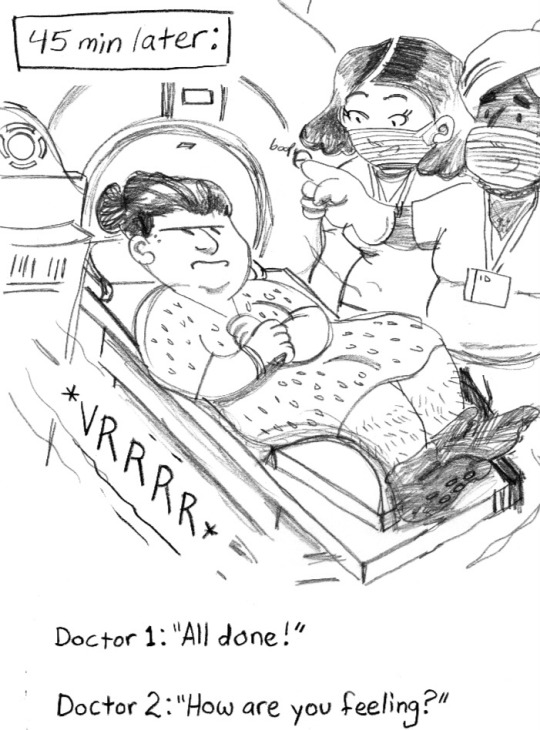
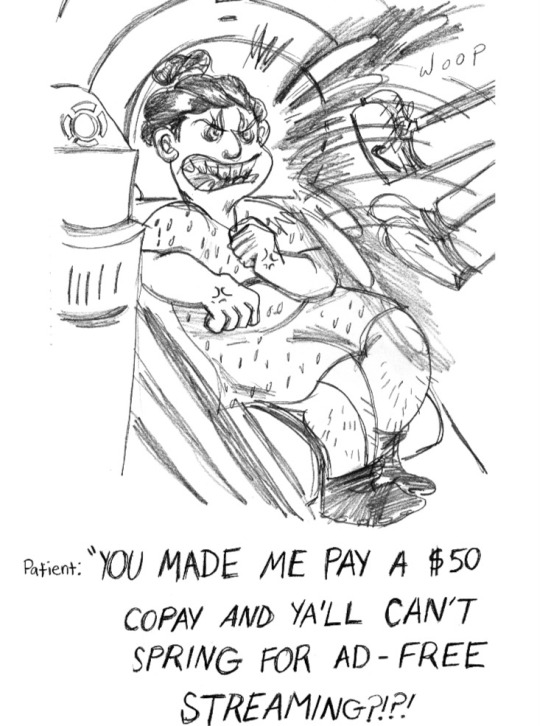
Next part- MRI shenanigans
#comic#comics#proud#drawing#sketch#artist#mri#mri scan#disability#disabled#osteogenesis imperfecta#arthritis#brittle bone disease#genetics#disabilties#cartoon#comix#webcomic#graphic medicine#graphic novel#book#books#book lover#booklr#comic books#bookblr#books and reading#memior#sick#get down with the sickness
872 notes
·
View notes
Text


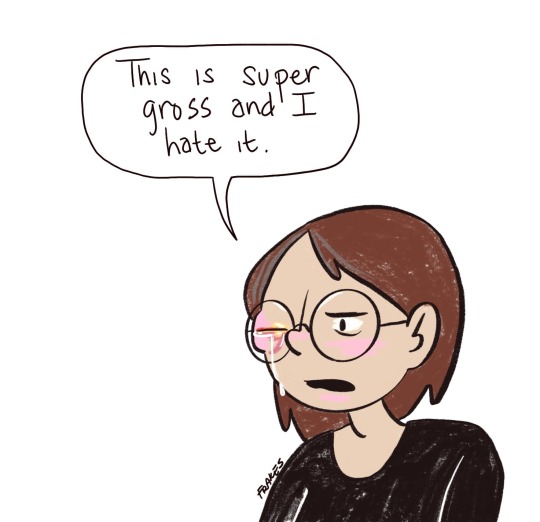
I have pink eye and I'm very grumpy about it. Can't even amuse myself with a glove balloon while waiting for the doctor 😠
13 notes
·
View notes
Text

My autoimmunity is in full swing and so is “Malady Magnet”
#comics#graphic medicine#graphic memoir#malady magnet#webcomic#chronic illness#hyperthyroidism#medical humor#medical humanities#funny but true#thyroid problems#comix
38 notes
·
View notes
Photo

It’s World IBD Day or IBD Awareness day ( if you prefer )May 19th!! This year I made a one page comic about what is in my go bag. This is the bag I bring on trips for fun as well as to the hospital(because I usually end up staying for a long time when I go). What’s in your bag?
(also I am posting this now because I wont be able to tomorrow).
#Graphic Medicine#IBDcomics#comics#crohn's problems#crohn's disease#crohns#fuckcrohns#ibd#ibdawareness#world ibd day#hospital#chronic illness#autoimmine disease#art#Illustration
53 notes
·
View notes
Photo

Anatomical Venus (2022)
6 notes
·
View notes
Text
Mollie Kotzen muses on being an "almost doctor" as a 4th-year medical student.
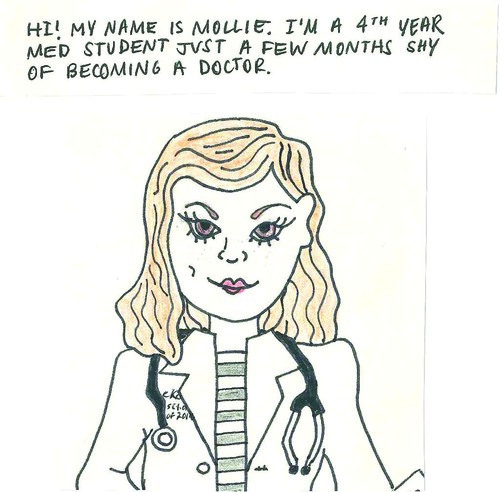
6 notes
·
View notes
Text



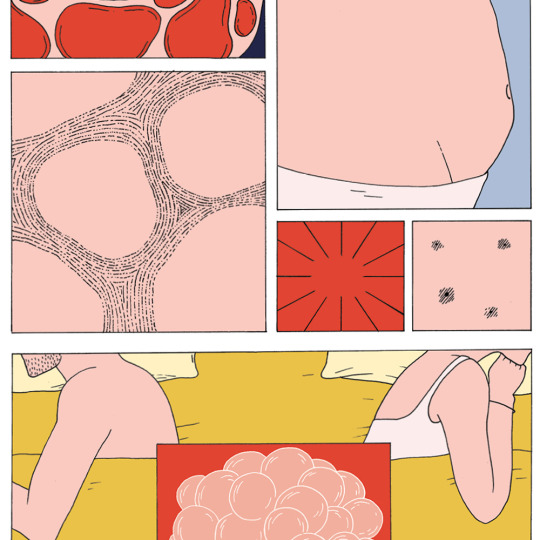
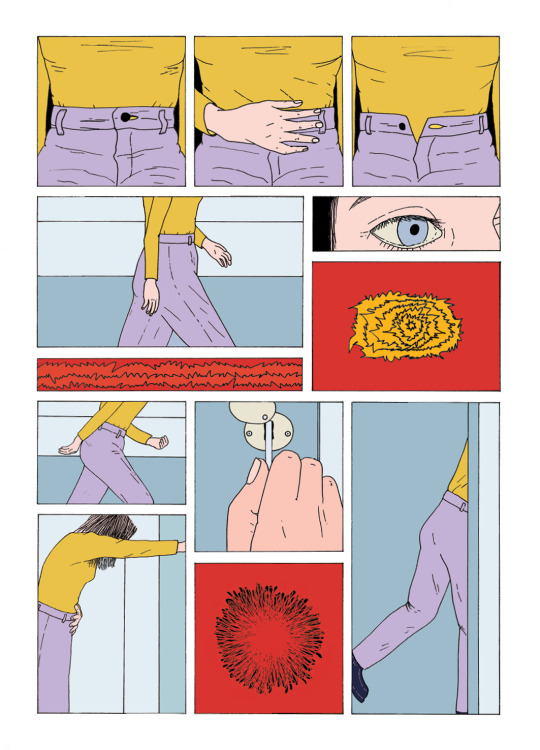
Here are some images taken from Trigger Shot, my second comic book that came out in April.
#illustration#drawing#art#artwork#comics#comic book#abstract comics#infertility#graphic medicine#graphic novel#graphic story
0 notes
Text
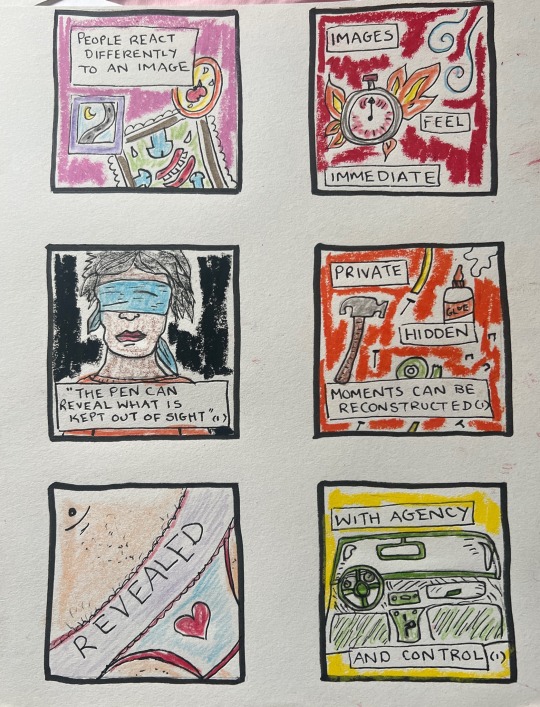
Why comics (a la Hilary Chute)
1 note
·
View note
Text
Q&A with Monica Chiu
The author of Show Me Where It Hurts: Manifesting Illness and Impairment in Graphic Pathography discusses the growing field of graphic pathography, its benefits, and more.
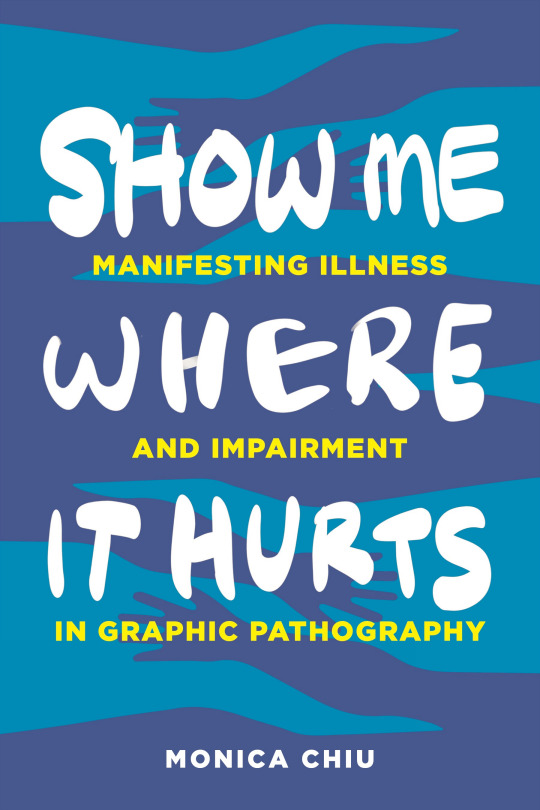
Why is graphic pathography such a fast-growing field, and how does it "work" for the drawing subject?
Graphic pathography allows subjects who have fallen ill or experienced a medical or clinical challenge to have their say—or rather, to draw their own representations. If the internal workings of the body disappear from consciousness when we are in good health, according to Drew Leder, their appearance as aches and pains during illness, I argue, invites artists to reenvision or revise Leder’s “recessed body.” Graphic pathography illustrates the experiences of illness, sometimes to critique a subject’s care and caregivers, other times to offer fresh perspectives on the effects of receiving chemotherapy, living with clinical depression, or struggling against anorexia, among many other experiences. Because the artists are freed from confining clinical representations to express themselves through the graphic line—one with infinite possibilities of showing what sometimes telling cannot achieve—graphic pathography invites aesthetic and personal responses by which others can learn and empathize. That medical schools increasingly are incorporating courses in graphic medicine, in addition to existing courses in narrative medicine (writing about one’s experiences of illness or impairment), teachers, students, and medical practitioners alike find that art can assist in healing.
What subjects do artists of graphic pathography pursue and why?
Artists attend to illnesses and diseases such as cancer, Alzheimer’s, depression, dementia, anorexia, COVID—every experience is different depending on a multitude of factors, including support, race, economic class, gender, community ideology, and sexual orientation. Artists also address sexual reassignment surgery to offer needed information for those uninformed of the procedures, to dispel fictions about trans subjects, and to highlight their challenges. Others draw comics about caring for the old and infirm—assuring their readers that no one correct way exists by which to provide comfort—or tending to the very young who die young, in illustrations of grief. Health care providers cogitate, by reading or creating comics, on how to be a compassionate doctor, nurse, or other caregiver by highlighting the pressures and pleasures as well as the challenges and victories of their professions. Medical students illustrate how their exhaustion and sometimes lack of thoughtful pedagogy leads to self-critique and self-doubt.
What benefits accrue in creating graphic pathography for artists, readers, and healthcare providers?
Artists bestow agency on their cartoon selves through thoughtful depictions of their corporeality drawn against disciplining representations created for them under health care and within health care spaces. We might usefully remind ourselves that the Latin-derived term “patient” is defined (by the Online Etymology Dictionary) as the “quality of being willing to bear adversities; a calm endurance of misfortune; bearing of suffering.” Where do we see the unpatients (the nonpatient subjects) of graphic pathography, those characters who unwillingly bear adversity? Through comics artists’ self-representations, traces of the imputations of illness and impairment, or of medicine’s sometimes cold and categorizing gaze, are slowly chipped away, and sometimes completely demolished, in the artist’s manifestation. The term manifestation references showing by illustration, the man of the drawing “hand,” and that of keeping a log, like a ship’s manifest.
Why do so many graphic pathographies by and about white subjects exist in relation to the paucity of works by artists of color?
This is the question that concludes my study, among related inquiries that invite other scholars in the field to participate in writing about graphic medicine’s many representations beyond those by and about white subjects: if predominantly white bodies self-represent, what does this glaring omission portend for the larger field of graphic medicine and its readers? To whom does medicine cater? Historically, black men and women unknowingly served as experimental bodies for medical science; meanwhile, Asian immigrant bodies were grounded in cultural narratives of both disease and palliation, the former playing out currently during the COVID pandemic, the latter in the conception of them as model minorities. In what unfortunate ways do images of black, yellow, and brown bodies intersect with illness and disability? I ask us to inquire: how is an academic focus on comics by white subjects consciously exposing or unconsciously contributing to a historical convergence among race, disease, and/or disability?
Show Me Where It Hurts: Manifesting Illness and Impairment in Graphic Pathography is now available from Penn State University Press. Learn more and order the book here: https://www.psupress.org/books/titles/978-0-271-09682-7.html. Save 30% w/ discount code NR23.
#Graphic Pathography#Pathography#Medicine#Healthcare#Graphic Studies#Art#Graphic Medicine#Drawing#PSU Press#Penn State University Press
1 note
·
View note
Text
Crowdfunding Corner: Soaring Penguin Press gets into Family and Relationships Therapy
Crowdfunding Corner: Soaring Penguin Press gets into Family and Relationships Therapy #comics #comicbooks #graphicnovel
Backer Beware: Crowdfunding projects are not guaranteed to be delivered and/or delivered when promised. We always recommend to do your research before backing.
Why doesn’t marriage come with a manual? Now it does – in graphic detail!
I Do I Don’t: How To Build A Better Marriage by licensed therapist Chandrama Anderson (MA, LMFT) and talented cartoonist Nur Jaffar G. Latip tells the story of a…
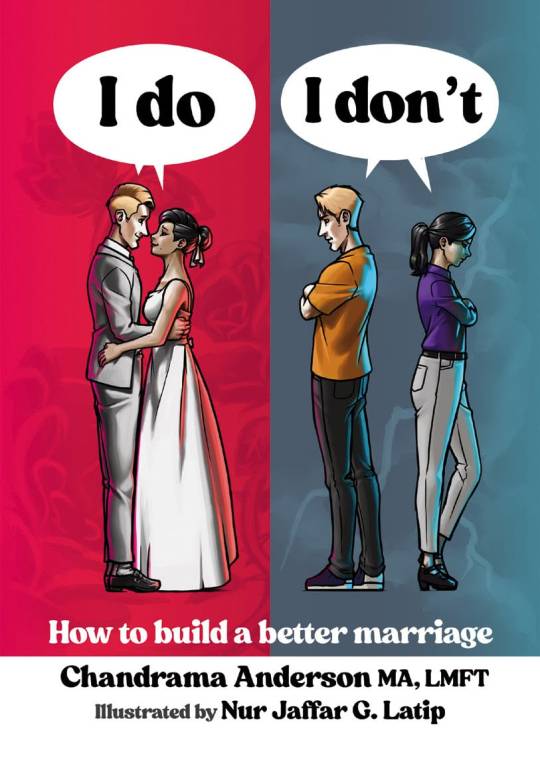
View On WordPress
#chandrama anderson#crowdfunder#graphic medicine#graphic novel#graphic novels#i do i dont how to build a better marriage#nur jaffar g. latip#soaring penguin press
0 notes
Text

My Dad Nathan moved in with us in Feb 2023, at age 100. "Being Here - Caring for Dad, 101" is a "Graphic Medicine Diary" of our life together.
#graphicmedicine#caregiving#graphic medicine#web comic#original comic#comic art#elder care#family caregiver#caregiverlife#graphic memoir
0 notes
Text


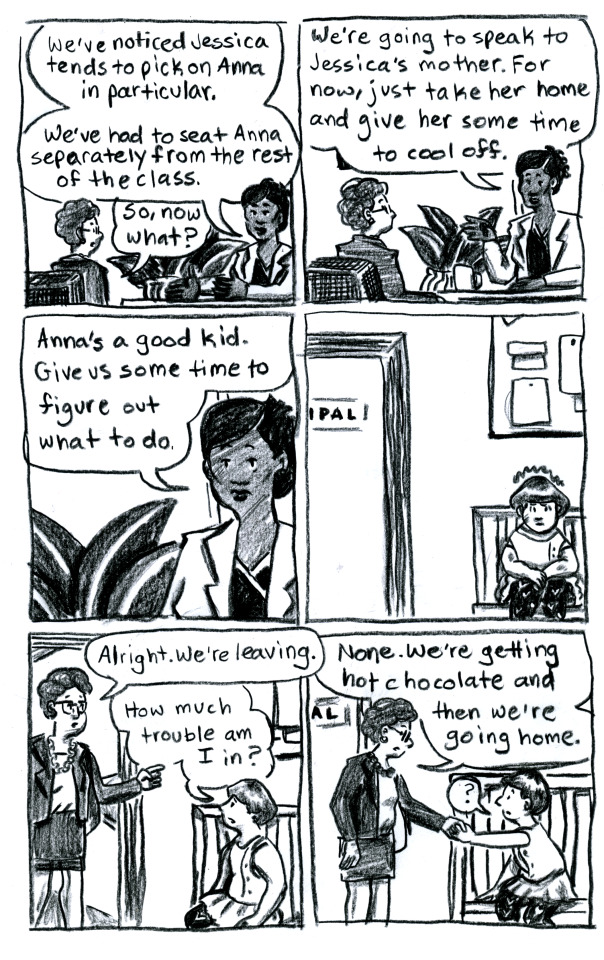
I have been working on a book for the last three years. It was going to be published by two separate publishers that have since gone out of business. I was told it was too "weird" for any other publisher to be picked up, but was a story worth sharing. I was told to Kickstart it, but that would take more refining, and I'm fucking sick of this book.
So I'll be posting the whole thing on here in piecemeal. YOU'RE WELCOME!!!!
Here's the pitch letter:
Brittle by Anna Sellheim 159 pages
Black and white
Logline:
After a lifetime of trying to ignore physical pain and emotional trauma by avoiding human connection, Anna takes a chance on her first romantic relationship at the age of 29. Will therapy and her love of art help her make meaningful and lasting relationships?
Synopsis:
Anna is an artist who desperately craves connection and seeks validation. However, early childhood trauma and an isolating bone disease have led to a lifetime of anger, depression, an eating disorder, and an overwhelming fear of rejection. When Anna takes a chance on her first romantic relationship at the age of 29, she goes to therapy to make sure she doesn’t blow it. Will therapy and her practice as an artist help Anna make the connections she has wanted her whole life?
Audience
The audience for this book would be those interested in graphic memoir, graphic medicine, exploring childhood trauma, chronic pain, people with uncommon genetic diseases, disability narratives, and those interested in whether connecting to your inner child is actually helpful. This book would also appeal to fans of Tessa Brunton’s Notes From A Sickbed, Lynda Barry’s 100 Demons, and Keiler Roberts’ Miseryland.
Bio
Anna Sellheim is originally from Washington DC. She earned her MFA in comics from the Center For Cartoon Studies in 2016. She has been published by the Nib, Oni Press and Seven Days. She also has contributed to a number of anthologies, most notably Dirty Diamonds and Comics For Choice. She has taught adult literacy in DC and has taught art and comic classes throughout the DMV Area and New England. She now works at the Refugee Youth Program, where she teaches art and comics to refugee youths ages 5-21 throughout Baltimore. Her work primarily deals with mental health, trauma, and the healing power of art.
#comic#comics#proud#bullying#COMIX#GRAPHITE#pencil#pencil drawing#elementary school#KIDS#graphic medicine#graphic novel#book review#book#bookblr#reading#bookworm#read#free#mid 30s#osteogenesis imperfecta#oi#brittle#brittle bones#brittle bones disease#pain#chronic pain#disability#therapy#ptsd
78 notes
·
View notes
Text
Graphic Medicine International Collective launches 2023 Graphic Medicine Award
The Graphic Medicine International Collective has opened the submission process for their second annual Graphic Medicine Award

View On WordPress
#downthetubes News#Élodie Durand#Graphic Medicine#Graphic Medicine Award#Graphic Medicine Conference#Graphic Medicine International Collective#Nancy and Herbert Wolf#Niki Smith#Rebecca Ollerton#Zara Slattery
1 note
·
View note
Text
Graphic Medicine: The Unlikely but Promising Partnership of Comics and Health Care
Graphic Medicine: The Unlikely but Promising Partnership of Comics and Health Care
A while back, indie comics artist Sam Hester found herself spending endless hours in the hospital, not as a patient but as primary caregiver for her mother, Jocelyn, a longtime Parkinson’s patient who had recently begun to hallucinate – she saw ghost-like figures surrounding her – while exhibiting signs of early-stage dementia.
Then another symptom kicked in. During a hospital visit, Hester…
View On WordPress
0 notes
Text
Graphic Medicine: The Unlikely but Promising Partnership of Comics and Health Care
Graphic Medicine: The Unlikely but Promising Partnership of Comics and Health Care
A while back, indie comics artist Sam Hester found herself spending endless hours in the hospital, not as a patient but as primary caregiver for her mother, Jocelyn, a longtime Parkinson’s patient who had recently begun to hallucinate – she saw ghost-like figures surrounding her – while exhibiting signs of early-stage dementia.
Then another symptom kicked in. During a hospital visit, Hester…
View On WordPress
0 notes
Photo
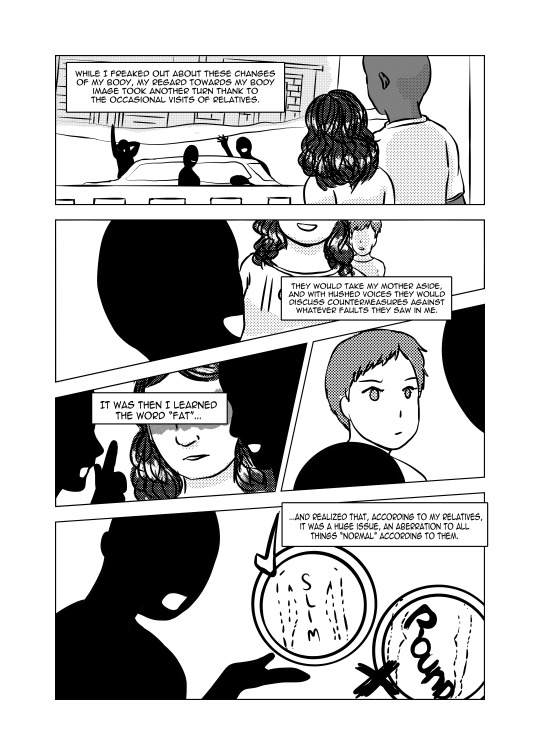
0 notes